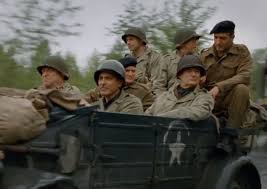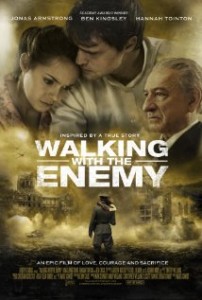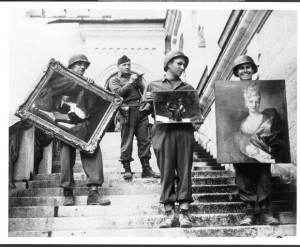 Many years ago, my husband and I attended an art auction at which one item was a pencil drawing of a peaceful river setting, made by an Austrian art student in the early 20th century: Adolf Hitler. The bidding opened at $10. There were no takers. Hitler retained his appreciation for art as he became a dictator and the man responsible for the most devastating war in world history and the Holocaust that killed six million Jews and hundreds of thousands of Slavs, Romany, gays, and disabled people. A part of his plan to take over the world and remake according to his dream of a Thousand Year Reich was to own the greatest art masterworks of all time, many to be displayed in a “Furher Museum” in his own honor. He ordered his army to take art from Jewish collectors, from churches, and from museums, and he hid them until they could be retrieved at the end of the war. When it appeared that he was going to lose the war, he ordered many of them to be destroyed.
Many years ago, my husband and I attended an art auction at which one item was a pencil drawing of a peaceful river setting, made by an Austrian art student in the early 20th century: Adolf Hitler. The bidding opened at $10. There were no takers. Hitler retained his appreciation for art as he became a dictator and the man responsible for the most devastating war in world history and the Holocaust that killed six million Jews and hundreds of thousands of Slavs, Romany, gays, and disabled people. A part of his plan to take over the world and remake according to his dream of a Thousand Year Reich was to own the greatest art masterworks of all time, many to be displayed in a “Furher Museum” in his own honor. He ordered his army to take art from Jewish collectors, from churches, and from museums, and he hid them until they could be retrieved at the end of the war. When it appeared that he was going to lose the war, he ordered many of them to be destroyed.
In a little-known part of the Allied war effort, an international group of 345 art historians, scholars, curators, and architects served in the Monuments, Fine Arts, and Archives section, to seek out the missing art treasures and, where possible, to prevent the battles going on in Europe from collateral damage of historic buildings and artworks. Writer-director-star George Clooney has turned this story into an exciting and entertaining film, but by no means a great one. At times it feels like “Oceans 11 Goes to War.” In fact, Clooney not only gave himself the same line he has in “Oceans 11,” he gives it the same line reading. It is one thing to make a heist film set in Las Vegas cuddly, with a bunch of pretend adorable crooks. It is another to try to make that work in the midst of a devastating real war, especially when every one of the clearly fictionalized and composite characters is always the essence of dignity, courage, honor, dedication, and dashing gallantry, quips included.
In this Hollywood-ized version, there are six primary operatives: Clooney plays the leader, Frank Stokes, who rounds up his non-dirty half-dozen, including recovering alcoholic Brit Donald Jeffries (“Downton Abbey’s” Hugh Bonneville), dashing Frenchman Jean Claude Clement (“The Artist’s” Jean Dujardin), MMoA curator James Granger (Damon), sculptor Walter Garfield (John Goodman), architect Richard Campbell (Bill Murray), and Preston Savitz (Christopher Guest regular Bob Balaban). Cate Blanchett is sincere but misused as a French woman working for the Germans who are taking paintings from Paris so she can give information to the Resistance.
Clooney can do better (“Goodnight and Good Luck”) than this script, which feels like a Robert McKee formula special, all the beats and plot points laid out according to the formula. As a result, it works. The sad casualties are balanced with the sentimental pauses (a nice moment when a character gets a recorded message from home is clumsily juxtaposed with a soldier dying on a table in the medical tent) and the bro-banter. But the breadth and brutality of the crimes and the humility and devotion of the heroes cannot help but move us and, I hope, inspire us to treasure the masterworks they saved and the heroes who saved them.
Parents should know that this film includes wartime peril and violence, with characters injured and killed, some graphic and disturbing images, sad deaths, explosions, shooting, land mine, constant smoking, some drinking and references to a drinking problem, and mild references to adultery.
Family discussion: Should people risk their lives to save art? Who should decide?
If you like this, try: “Is Paris Burning?” and The Train and the documentary about Nazi art theft, The Rape of Europa
and the documentary about Nazi art theft, The Rape of Europa — and look into the history of some of your favorite artworks
— and look into the history of some of your favorite artworks

, Stealing Klimt, and The Rape of Europa
. “The Woman in Gold,” a new feature film about the lawsuit with Helen Mirren and Ryan Reynolds, will be in theaters this spring.




